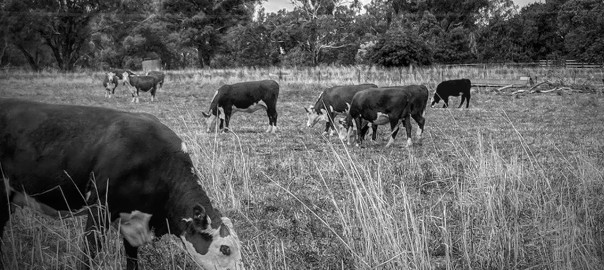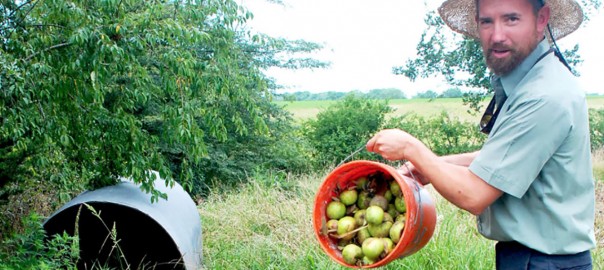One of the more fascinating aspects of the meat industry in the United States is the use and misuse of product naming and labeling by various purveyors. We’ve covered this topic a fair amount, quite honestly, because it is an area where we see so much manipulation and, sometimes, purposeful deception of consumers. This is most striking when it comes to grass-fed cattle and the designation “grass-fed beef” in particular.
Grass-fed AND grass-finished
One of the first things we discovered about quality grass-fed beef is how little customers know about the products they buy and eat.
There’s not that much to know, but, crazily, it’s still very confusing for the consumer. Grass-fed beef is expected to come from cattle that eat grass — or other green forage — while grazing in open pastures for their entire life. Seems pretty cut and dried.
However, transparency hasn’t always been the beef industry standard.
The fine print – Grain-fed beef
Confusion arrives with the use of labels such as “grass-fed, grain-finished beef,” which could trick consumers into thinking the meat they are eating is something it is not. Basically, “grass-fed, grain-finished” is conventional beef, the same thing as every cow raised.
Currently, 98 percent of beef consumed in the United States is grain-fed beef. However, every cow starts out the same way: It is raised the first six months on its mother’s milk and continues for about a year just grazing on grass (and hay or other “forage” as it is impossible to grow cattle on grass year-round in most regions of the country). After half a year, the majority of cows move to the feedlot where they are fattened on grains for the last 90 to 160 days before slaughter.
But some cattle continue to graze and feed on grass after those first six months. This is what people think of when they seek out truly grass-fed, grass-finished beef.
When a label says “grass-fed, grain-finished,” that’s just the same thing as every other steak or roast at any supermarket. They were taken to a feedlot, just like other cattle. Although, that’s not what the labeling is trying to imply.
You can even have grass-fed and grain-fed cattle on the same ranch.

Why aren’t all cows both grass-fed and grass-finished?
The entire system is built for grain-fed, not grass-fed production. Grain-finishing is more efficient and cheaper, and it adds weight a lot quicker to get the cattle primed for slaughter. It also gives the cattle the type of marbling and fat content that Americans have grown accustomed to in their beef. If you think about it, even the “quality” ratings we use to talk about our beef — choice, select and prime — are based on marbling and rapid weight gain.
Feedlots and grain-finishing
Beef sales have been on the decline for a number of years, and a big reason for that is because people think that steaks are unhealthy. The reality of what makes beef potentially unhealthy has to do with the artificial fattening of the cow. Not only do grain-finished cattle eat food that has not been a traditional part of their diet, but feedlot cows also have more antibiotics and hormones than those that grazed for their entire lives (that is until some stricter FDA rules were put in place in 2017 tried to limit this practice).
Studies have discovered that grain-fed, corn-fed, or grain-finished cattle do not have the same nutrition profile as grass-fed. Studies show that cattle fed grain lack as many good omega-3 fatty acids and CLA (conjugated linoleic acid) as grass-fed cows. Both of these essential fatty acids have pretty great health benefits.
And yet, the system is structured in a way where grass-fed is just not an option for most cattle ranchers and beef producers. They have limited resources and must focus on making their cattle operations as efficient as possible. Letting cattle graze for their entire lives does not work for many beef producers.

Purposeful misrepresentation
Some nefarious producers still want the financial benefits of shipping grass-fed, natural beef. This led to the creation and use of the grass-fed, grain-finished label.
Mislabeling isn’t the only tactic that has confused consumers. We’ve heard a lot from people who’ve tried grass-fed beef before and didn’t like it, even saying that it tastes like shoe-leather. We cannot imagine how someone could think that tender grass-fed, grass-finished beef tastes anything other than delicious.
We discovered that at one point producers trying to get into the grass-fed market would sell dairy cows. While most dairy cows are just fed grass, they are often old by the time they stop producing milk. In these instances, the product being sold was not beef raised with the intention of being high-quality meat, but that it was raised for dairy and got used for meat, under the implication that it was “grass-fed.” But as the market has grown, more and more companies have decided to raise grass-fed cows specifically for meat instead of dairy cows.
And so most of the beef on the market tastes a lot better than what people who remember eating grass-fed meat — but were actually eating dairy cow — have experienced.
This issues of misrepresentation and mislabeling have been a persistent problem for consumers who may have been unknowingly ignorant to the realities. When someone buys grass-fed beef, they think they are getting an idyllic cow grazing in a field. Too often that hasn’t been the case.
Finding real grass-fed beef
One of the challenges for the customer is that they have good intentions, they want to eat a quality product, and they want the benefit of eating a steak that’s better for them. But they can easily be led astray.
The key is for consumers to look for labels and brands that offer either 100 percent grass-fed meat or the grass-fed, grass-finished labeling. There are also a lot of organizations that offer to certify that products are indeed fully grass-fed. This includes the American Grassfed Association. However, the USDA, which only monitors certified organic beef, does not concern itself with grass-fed regulation. The story of how certified organic/grass-fed beef is labeled and regulated is the topic of another post entirely.
ButcherBox is a brand that stands against all this confusion. We partner only with the farmers whose interests are aligned with our own. We want to bring the customers the best quality meats without any surprises.
And, we are willing to scour the globe to do that.
We want to end the confusion about grass-fed, grass-finished beef. It’s time to be able to access high-quality, trusted meat.










